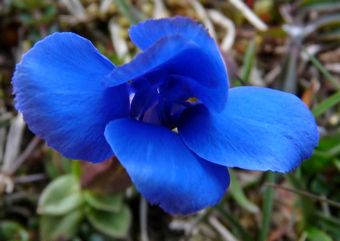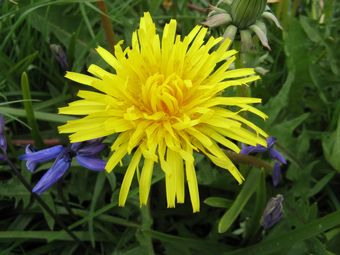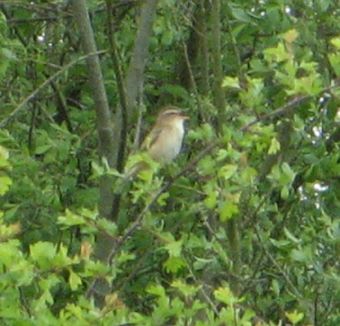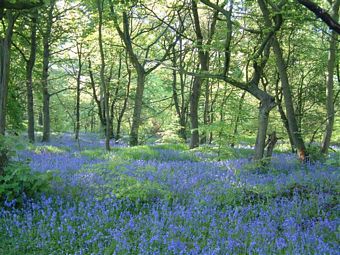WFV Otley Wetlands & Sun Lane Nature Reserve 09.06.09
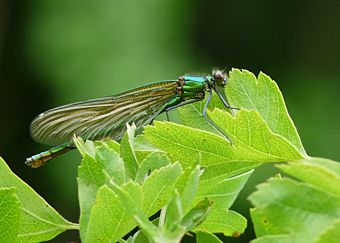 Otley Wetlands, banded demoiselleWe spent the morning at Otley Wetlands, a private site extremely well managed by Wharfedale Nats, where Neville and his wife pointed out the special features of the site. We saw many different plants and birds together with evidence of otters, which are regularly about by very rarely seen, and an enormous amount of damselflies. In Joan's absence, Alice recorded a total of 73 flowering plants.
The forecast rain fortunately did not materialise and we enjoyed a very pleasant afternoon having a guided tour of Sun Lane Nature Reserve, Burley-in-Wharfedale, also managed by Wharfedale Nats, with Anne. This reserve is also very well managed and has a very active support group - quite local and well worth a visit if you didn't make this trip. Because soil was imported from different sites when the old village tip was reclaimed, the reserve has a wide variety of different interesting plants. We added a few birds to our list and saw lots more damselflies! Total flower count here was 120 and the total bird count for the day 36.
Marilyn Barber and Brian Ellis led this week's trip which was enjoyed by 16 members.
Otley Wetlands, banded demoiselleWe spent the morning at Otley Wetlands, a private site extremely well managed by Wharfedale Nats, where Neville and his wife pointed out the special features of the site. We saw many different plants and birds together with evidence of otters, which are regularly about by very rarely seen, and an enormous amount of damselflies. In Joan's absence, Alice recorded a total of 73 flowering plants.
The forecast rain fortunately did not materialise and we enjoyed a very pleasant afternoon having a guided tour of Sun Lane Nature Reserve, Burley-in-Wharfedale, also managed by Wharfedale Nats, with Anne. This reserve is also very well managed and has a very active support group - quite local and well worth a visit if you didn't make this trip. Because soil was imported from different sites when the old village tip was reclaimed, the reserve has a wide variety of different interesting plants. We added a few birds to our list and saw lots more damselflies! Total flower count here was 120 and the total bird count for the day 36.
Marilyn Barber and Brian Ellis led this week's trip which was enjoyed by 16 members.
View more photos from the day in the wfv gallery
Stuart



